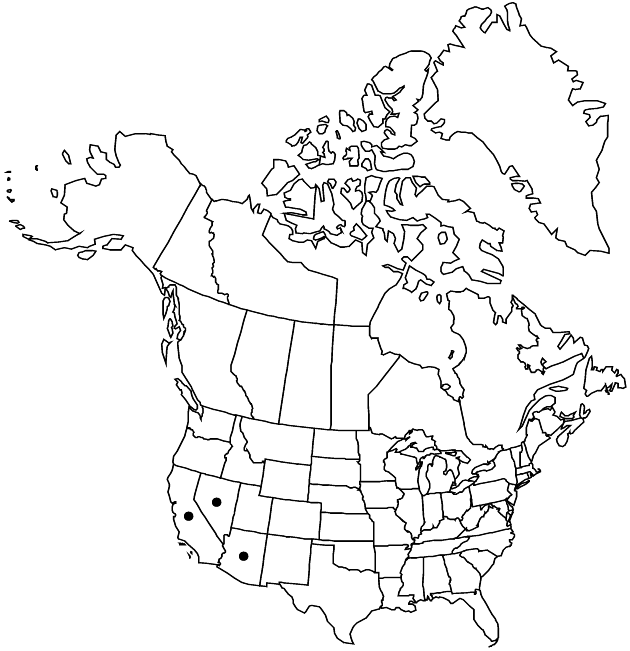Difference between revisions of "Arida carnosa"
Sida 20: 1413. 2003.
FNA>Volume Importer |
imported>Volume Importer |
||
| (2 intermediate revisions by 2 users not shown) | |||
| Line 69: | Line 69: | ||
|publication year=2003 | |publication year=2003 | ||
|special status= | |special status= | ||
| − | |source xml=https:// | + | |source xml=https://bitbucket.org/aafc-mbb/fna-data-curation/src/2e0870ddd59836b60bcf96646a41e87ea5a5943a/coarse_grained_fna_xml/V19-20-21/V20_923.xml |
|tribe=Asteraceae tribe Astereae | |tribe=Asteraceae tribe Astereae | ||
|genus=Arida | |genus=Arida | ||
Latest revision as of 20:06, 5 November 2020
Subshrubs, 10–90 cm (bushy); rhizomes elongate. Stems 1–10+, suberect to reclining or sprawling, slender, repeatedly branched throughout, divaricately so, glabrous, glaucous. Leaves cauline; sessile; proximal blades linear, 10–20 × 2–3 mm, distal greatly reduced, scalelike, (succulent) bases tapered, margins entire, apices apiculate to spinose, faces glabrous. Heads borne singly (terminal), in diffuse, bracteate, cymiform arrays. Involucres 5–7 × 4–7 mm in flower. Phyllaries in 4–5 series, appressed or spreading, lanceolate, 2–8 mm, bases whitish to tan or tan throughout, margins entire to laciniate, apices often green, obtuse to acuminate, faces glabrous. Ray florets 0. Disc florets 12–25+; corollas yellow, 5–6 mm. Cypselae subcylindric, 2.5–3 mm, 7–9-nerved per face, faces sparsely sericeous; pappi whitish, setose, 4–6 mm. 2n = 10.
Phenology: Flowering Aug–Sep.
Habitat: Alkaline flats, canyons, meadows
Elevation: 100–1600 m
Distribution

Ariz., Calif., Nev., Mexico (Sonora).
Discussion
Arida carnosa is recognized by its subshrubby habit, glabrous, glaucous, and succulent stems, reduced scalelike leaves, and absence of ray florets. It occurs in or around alkaline salt flats, where it is associated with other salt-tolerant genera such as Sarcobatus, Distichlis, and Atriplex.
Selected References
None.